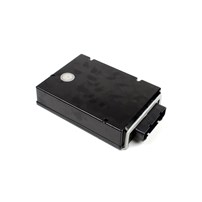

Hopefully, these tests have allowed you to find the issue with your fuel injectors but, as mentioned before, it may not be an electrical problem that is causing the injector to malfunction. A lower reading means there is excess resistance in the wire somewhere. Leave the ground lead in position and test all of your injector wiring harnesses. Step 5: Repeat with all injector wiring harnesses.

One will be connected to ground and will read 0 volts. The wiring harness will have two terminals that the prongs on the injector insert into. Step 4: Place positive lead on the wiring harness terminal. This frees up your hands to focus on getting the positive lead in the correct spot.
Tip: Some DVOMs have alligator clips so that you don’t have to hold the lead. The car’s frame is connected to ground, so look for an unpainted piece of the frame under the hood. Step 3: Touch the negative lead of the DVOM to a ground source. Use the lowest range possible if the meter doesn’t auto range. Step 2: Set up DVOM to measure DC voltage. You want battery power flowing, but don’t want the engine running. Turn the key to the second (ON) position for this test. Tip: You can find the correct resistance for your injectors by searching online or in your vehicle’s repair guide. They should all have a resistance within half of an ohm from each other.Īny major difference and that injector should be inspected to make sure that it is firing correctly. They have much lower resistance, typically around 2-5 ohms. Low impedance injectors are found on high performance and larger injectors. High impedance injectors are the most common found on cars these days. Place the meter leads on the prongs inside the connector, making sure that they are not touching each other. Set it to the lowest range if the meter doesn’t autorange. There may be a slide lock that you need to move before you can press down on the tabs to remove the wiring harness. They are typically secured by bolts and can be removed with a basic socket set including an extension. Note: Some engines have plastic panels that need to be removed before you can access the injectors. Part 1 of 2: Testing injector resistanceĭigital Volt-Ohmmeter (DVOM) or multimeter with ohms setting This, in turn, causes the fuel to not burn completely and will create a misfire. They can clog up, which will decrease the spray inside the cylinder. It is possible for the injector to cause issues even if it is receiving the correct voltage. This guide will focus on making sure the injectors are receiving the correct amount of power and that the injector itself doesn’t have too much resistance. Over the life of the car, the injectors fire millions of times and eventually can wear out or clog up, preventing the engine from operating correctly. 
This allows the injector to deliver precise amounts of fuel into the cylinder, even while the engine is spinning at higher RPMs. This ruins fuel economy since all of the fuel may not be combusting, and you have to press harder on the gas pedal to get the car to move.įuel injectors are a particular type of solenoid that are made to actuate their pistons very quickly. Having a faulty injector can cause one of your cylinders to not ignite fully, which will throw the balance of the engine off at all speeds. If your engine is running rough, there may be an issue with the vehicle’s fuel delivery system.







 0 kommentar(er)
0 kommentar(er)
